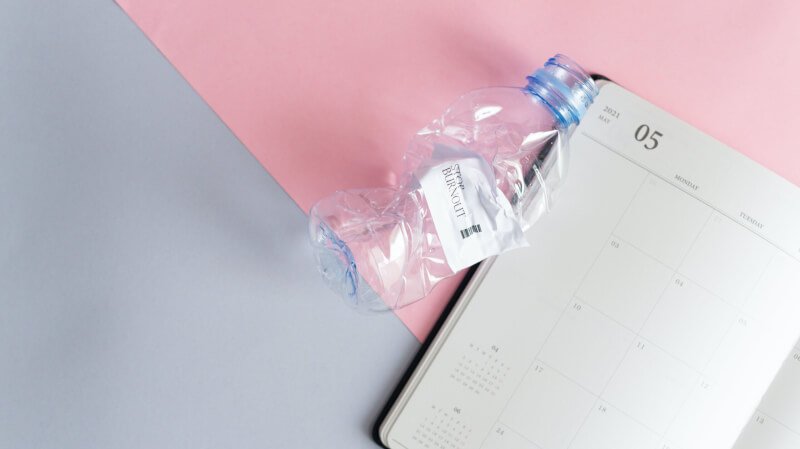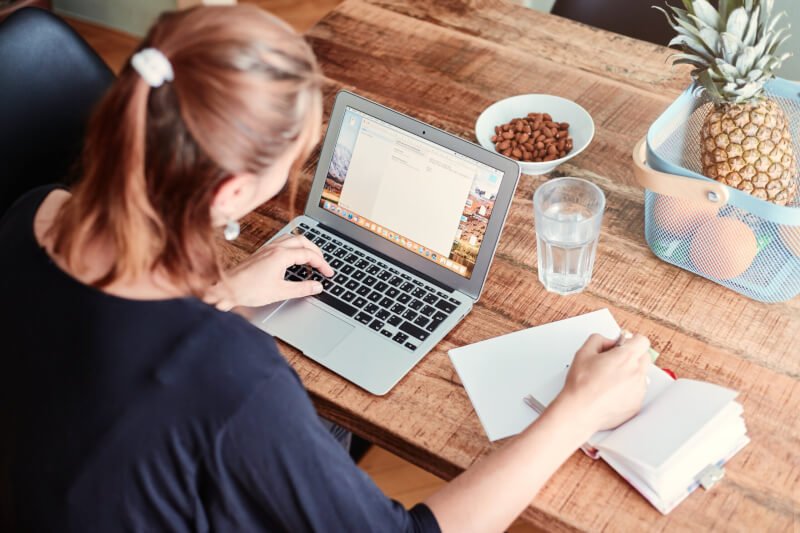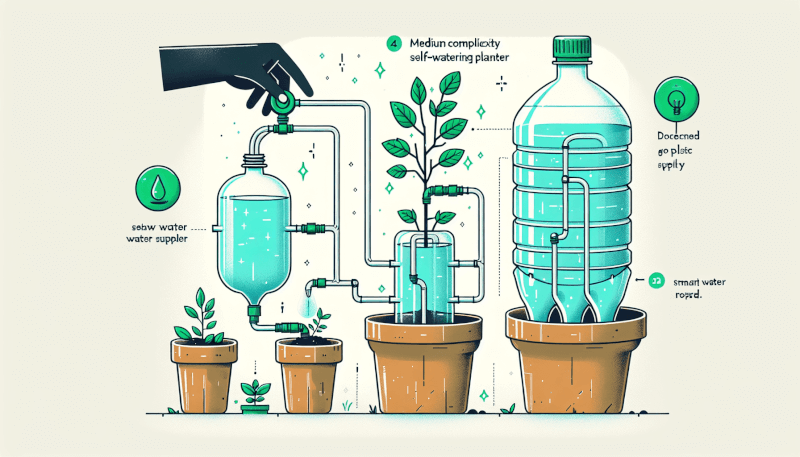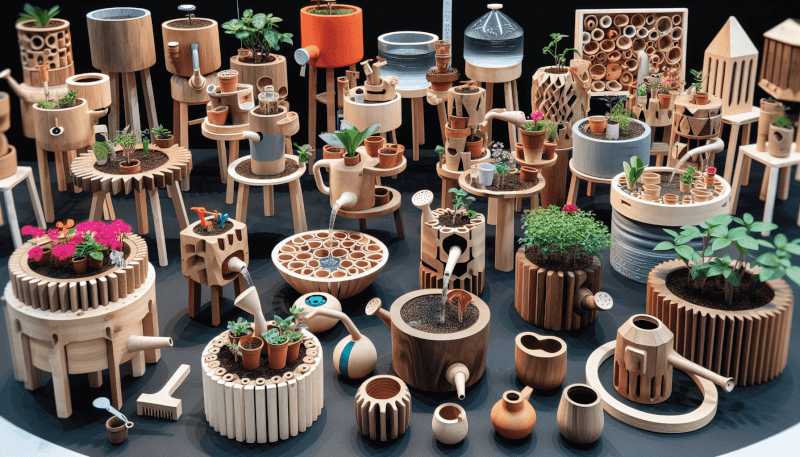Looking to add a touch of green to your living space? In this article, you’ll discover a range of DIY projects that will teach you how to build your very own self-watering planter. These innovative planters not only make gardening easier but also ensure your plants get the perfect amount of water without any effort on your part. Whether you’re a seasoned gardener or just getting started, these DIY projects will provide you with the knowledge and inspiration to create a beautiful and thriving indoor or outdoor garden. Say goodbye to over-watering or forgetting to water your plants – with these self-watering planters, you’ll have happy and healthy greenery all year round!

1. Why Build a Self-Watering Planter
When it comes to gardening, one of the most essential tasks is watering your plants. However, with our busy lifestyles, it can be challenging to remember to water your plants regularly. That’s where self-watering planters come in. These innovative planters are designed to reduce watering frequency, ensure consistent watering, promote plant health, and save water. Let’s take a closer look at the benefits of building a self-watering planter.
1.1 Reduces Watering Frequency
With a self-watering planter, you no longer need to water your plants as frequently. These planters are equipped with a reservoir that holds extra water for the plants to draw from. This means you won’t have to worry about your plants drying out or wilting when you forget to water them for a day or two. Self-watering planters provide a steady and consistent water supply to your plants, even when you’re busy or away on vacation.
1.2 Ensures Consistent Watering
Consistency is key when it comes to watering your plants. Traditional watering methods often result in overwatering or underwatering, which can be detrimental to plant health. Self-watering planters, on the other hand, provide a controlled watering system that delivers water directly to the roots as the plant needs it. This ensures that your plants receive the right amount of water consistently, leading to healthier and more vibrant plants.
1.3 Promotes Plant Health
Plants thrive when they receive the right amount of water. Overwatering or underwatering can lead to root rot, nutrient deficiencies, and even plant death. Self-watering planters help maintain optimal soil moisture levels, preventing these issues and promoting plant health. By allowing the plants to draw water from a reservoir, self-watering planters create an environment where roots can grow and absorb nutrients efficiently. This ultimately results in stronger, healthier, and more productive plants.
1.4 Saves Water
Water conservation is an important consideration for any gardener. Traditional watering methods often lead to water wastage through runoff or inefficient absorption. Self-watering planters, on the other hand, are designed to minimize water usage. The reservoir in these planters only releases water to the plants when they need it, reducing the amount of water lost to evaporation or runoff. By building a self-watering planter, you can help conserve water while still providing optimal hydration for your plants.
2. Basic Components of a Self-Watering Planter
To build a self-watering planter, it’s essential to understand the basic components that make up these ingenious systems. Let’s take a look at each component and its role in ensuring the proper functioning of a self-watering planter.
2.1 Reservoir
The reservoir is the heart of a self-watering planter. It’s a dedicated space that holds water for the plants to draw from. This can be a separate container or a portion of the planter itself. The size of the reservoir will depend on the size and water requirements of your plants. A larger reservoir will provide more water storage and allow for longer periods between refills. It’s essential to choose a reservoir that is easy to access and refill without disturbing the plants.
2.2 Water Level Indicator
A water level indicator is a handy tool that helps you monitor the water level in the reservoir. It can be as simple as a small tube or stick inserted into the reservoir, with markings indicating the minimum and maximum water levels. This visual indicator allows you to see when it’s time to refill the reservoir, ensuring that your plants always have access to water.
2.3 Soil/Wicking Material
The soil or wicking material is responsible for drawing water from the reservoir to the plant’s roots. This material should have excellent capillary action, meaning it can absorb and transport water effectively. Common wicking materials include peat moss, coconut coir, or specially designed wicking fabric. The wicking material is placed in contact with the soil or directly in the reservoir, allowing the plants to take up water as needed.
2.4 Plant Pot
The plant pot is where your plants will be housed. It can be made from various materials, such as plastic, terracotta, or ceramic. When choosing a plant pot, make sure it has proper drainage holes to prevent waterlogging. The pot should also fit securely into the self-watering planter, with the wicking material extending into the pot to provide water to the plant’s roots.
2.5 Drainage Hole
While self-watering planters are designed to retain water, it’s crucial to provide an outlet for excess water to prevent waterlogging. A drainage hole at the bottom of the planter allows any excess water to escape, ensuring that the plant’s roots don’t sit in standing water. Proper drainage is essential to prevent root rot and promote healthy root growth.
3. Self-Watering Planter Design Ideas
Now that we understand the basic components of a self-watering planter, let’s explore some design ideas to inspire your DIY project. These design ideas are versatile and can be customized to suit your preference and available materials. Whether you prefer a rustic look or a modern aesthetic, there’s a self-watering planter design for everyone.
3.1 Recycled Container Planter
If you’re passionate about recycling and upcycling, a recycled container planter is an excellent choice. You can repurpose old buckets, plastic containers, or even wooden crates as the base for your self-watering planter. Get creative and give a new life to items that would otherwise end up in the trash. Remember to choose containers that are sufficiently deep to accommodate the plant’s root system and provide enough room for the reservoir.
3.2 PVC Pipe Planter
PVC pipe can be a versatile and affordable material for building self-watering planters. You can use PVC pipes of different diameters to create a tiered or modular planter system. Cut the pipes to the desired height and drill holes for the plant pots. Attach the pipes vertically or horizontally, depending on your design preference. PVC pipe planters offer a sleek and modern look while providing an efficient self-watering system.
3.3 Wine Bottle Planter
Wine bottle planters add a touch of elegance to any garden or indoor space. By repurposing wine bottles, you can create a unique and stylish self-watering planter. Cut the wine bottle in half and invert the neck into the bottom half to act as a reservoir. Add a wicking material and potting soil to the neck, and voila! Your self-watering wine bottle planter is ready to house your favorite plants. This design not only looks beautiful but also saves space, making it ideal for small gardens or balconies.
3.4 Mason Jar Planter
If you love a rustic and charming aesthetic, a mason jar planter is perfect for you. Mason jars are readily available and can be transformed into adorable self-watering planters. Simply drill a hole in the jar lid for the wick, and fill the jar with water. Attach the lid to the jar and invert it, allowing the wick to draw water into the soil. Mason jar planters are ideal for herbs, small flowers, or succulents, adding a touch of whimsy to your space.
3.5 Wooden Box Planter
For a classic and timeless look, a wooden box planter is a fantastic choice. This design is not only aesthetically pleasing but also offers ample space for larger plants or a variety of herbs and vegetables. Build a sturdy wooden box with a removable lid for easy access to the reservoir. Line the box with a water-resistant material, such as pond liner, to prevent water leakage. The wooden box planter is a versatile option that can be customized to suit any garden or patio decor.
4. Step-by-Step Instructions for Building a Recycled Container Planter
Ready to get your hands dirty and start building your own self-watering planter? Let’s start with a step-by-step guide to building a recycled container planter. This DIY project is a great way to repurpose old containers and reduce waste while enjoying the benefits of a self-watering system.
4.1 Gather Materials
To build a recycled container planter, you will need the following materials:
- A deep container (e.g., bucket, plastic container, wooden crate)
- Water level indicator (e.g., small plastic tube, stick, or ruler)
- Wicking material (e.g., peat moss, coconut coir, wicking fabric)
- Plant pot
- Drill with various drill bits
- Potting soil
- Plants
4.2 Prepare the Container
Start by preparing the container for your planter. If using a plastic container, drill a drainage hole at the bottom to allow excess water to escape. For wooden crates, ensure they are free from any paint or chemicals that may leach into the soil. If necessary, line the container with a water-resistant material to prevent water leakage.
4.3 Create the Reservoir
The next step is to create the reservoir for your planter. Fill the bottom of the container with a layer of small rocks or gravel to promote drainage. This space will serve as the water reservoir and prevent the plant’s roots from sitting in standing water.
4.4 Add the Water Level Indicator
Attach the water level indicator to the inside of the container, ensuring it reaches the bottom of the reservoir. This will allow you to monitor the water level and know when it’s time to refill the reservoir. You can use a small plastic tube, stick, or ruler with markings indicating the minimum and maximum water levels.
4.5 Insert the Wicking Material
Place the wicking material in contact with the reservoir, extending it up into the plant pot. This will allow the wicking material to draw water from the reservoir into the potting soil, providing consistent moisture to the plants. Make sure the wicking material is securely in place and not twisted or tangled.
4.6 Planting and Using the Self-Watering Planter
Fill the plant pot with potting soil, leaving enough space for the plants’ root systems. Plant your desired plants in the pot, ensuring they are well-spaced and have enough room to grow. Place the plant pot into the self-watering container, ensuring that the wicking material is inserted into the potting soil. Fill the reservoir with water until it reaches the minimum water level indicated by the water level indicator. Your recycled container self-watering planter is now ready to nurture your plants!
Congratulations on building your own self-watering planter! With proper care and maintenance, you’ll create a flourishing garden that practically takes care of itself. Enjoy the benefits of reduced watering frequency, consistent hydration, and healthier plants.

5. Step-by-Step Instructions for Building a PVC Pipe Planter
If you’re looking for a sleek and modular self-watering planter design, a PVC pipe planter might be the perfect choice. This design allows you to create a tiered or customizable system, making it ideal for small spaces or apartment balconies. Let’s dive into the step-by-step instructions for building your very own PVC pipe planter.
5.1 Gather Materials
To build a PVC pipe planter, you will need the following materials:
- PVC pipes (various diameters and lengths)
- PVC pipe fittings (elbows, tees, connectors)
- Water level indicator (e.g., small plastic tube, stick, or ruler)
- Wicking material (e.g., peat moss, coconut coir, wicking fabric)
- Plant pots
- Drill with various drill bits
- Potting soil
- Plants
5.2 Cut the PVC Pipe
Begin by cutting the PVC pipes to the desired lengths for your planter. You can create segments of different heights to achieve a tiered effect. Use a saw or PVC pipe cutter to make clean cuts. Make sure to measure and mark the pipes accurately before cutting to ensure precise alignment when assembling the planter.
5.3 Assemble the Planter
Assemble the PVC pipe segments using the appropriate fittings. Connect the pipes using elbows, tees, or connectors to create the desired structure. Consider the dimensions and configuration that best fits your available space and aesthetic preferences. Test the stability of the structure before proceeding to the next step.
5.4 Add the Reservoir and Water Level Indicator
To create the reservoir, choose one PVC pipe segment and cap one end securely. This section will hold the water for the plants. Attach a water level indicator to the inside of the reservoir, ensuring it reaches the minimum and maximum water levels. You can use a small plastic tube, stick, or ruler with markings.
5.5 Insert the Wicking Material
Insert the wicking material into each plant pot and ensure it touches the bottom of the pot. This material will draw water from the reservoir into the potting soil, ensuring the plants receive consistent hydration. Place the plant pots into the PVC pipe segments, ensuring the wicking material is securely inserted into the potting soil.
5.6 Planting and Using the Self-Watering Planter
Fill each plant pot with potting soil, leaving enough space for the plants’ root systems. Plant your desired plants in each pot, ensuring they have enough room to grow. Place the plant pots into the PVC pipe segments, aligning them with the wicking material. Fill the reservoir pipe with water until it reaches the minimum water level indicated by the water level indicator. Your PVC pipe self-watering planter is ready to bring a modern touch to your garden or balcony!
Maintain your PVC pipe planter by regularly monitoring the water level and refilling the reservoir as needed. With proper care, your self-watering planter will thrive and provide a beautiful display of healthy plants.
6. Step-by-Step Instructions for Building a Wine Bottle Planter
If you appreciate elegance and whimsy in your garden or indoor space, a wine bottle planter may be the perfect addition. This DIY project allows you to repurpose empty wine bottles while creating a unique and eye-catching self-watering planter. Let’s dive into the step-by-step instructions for building your own wine bottle planter.
6.1 Gather Materials
To build a wine bottle planter, you will need the following materials:
- Empty wine bottle(s)
- Water level indicator (e.g., small plastic tube, stick, or ruler)
- Wicking material (e.g., peat moss, coconut coir, wicking fabric)
- Plant pot(s)
- Drill with diamond drill bit
- Potting soil
- Plants
6.2 Prepare the Wine Bottle
Start by cleaning and removing any labels from the wine bottle. Immerse the wine bottle in hot water to soften the adhesive, making it easier to peel off the labels. Once clean, secure the wine bottle in place using a vice or clamp to ensure stability during drilling.
6.3 Create the Reservoir and Water Level Indicator
Using a drill with a diamond drill bit, carefully drill a hole near the base of the wine bottle. This will serve as the drainage hole for excess water and as the entry point for the wicking material. Attach the water level indicator to the inside of the wine bottle, ensuring it reaches the minimum and maximum water levels. You can use a small plastic tube, stick, or ruler with markings.
6.4 Insert the Wicking Material
Insert the wicking material through the drainage hole and extend it into the wine bottle, reaching the bottom of the bottle. This wicking material will draw water from the reservoir into the potting soil, providing water to the plant as needed. Ensure the wicking material is securely in place and not twisted or tangled.
6.5 Planting and Using the Self-Watering Planter
Fill the plant pot with potting soil, leaving enough room for the plants’ root systems. Plant your desired plants in the pot, making sure they have adequate space to grow. Place the pot into the wine bottle, ensuring the wicking material is inserted into the potting soil. Fill the wine bottle with water until it reaches the minimum water level indicated by the water level indicator. Congratulations! You’ve successfully created a charming and functional wine bottle self-watering planter.
Remember to periodically monitor the water level in the wine bottle and refill it when needed. With proper care and attention, your wine bottle planter will create a captivating display of flourishing plants and add a unique touch to your home or garden.

7. Step-by-Step Instructions for Building a Mason Jar Planter
If a rustic and whimsical aesthetic is what you’re after, a mason jar planter is sure to satisfy your gardening desires. This DIY project allows you to transform simple mason jars into adorable self-watering planters. Let’s dive into the step-by-step instructions for building your own mason jar planter.
7.1 Gather Materials
To build a mason jar planter, you will need the following materials:
- Mason jar(s)
- Jar lid(s)
- Water level indicator (e.g., small plastic tube, stick, or ruler)
- Wicking material (e.g., peat moss, coconut coir, wicking fabric)
- Plant(s)
- Potting soil
7.2 Prepare the Mason Jar
Start by cleaning the mason jar and removing any labels or residues. Ensure the mason jar is free from any cracks or damages that may affect its stability. Secure the mason jar in place using a vice or clamp to prevent it from moving while you work.
7.3 Create the Reservoir and Water Level Indicator
Using a drill with a suitable size drill bit, carefully drill a hole in the center of the jar lid. This hole is where the water level indicator will be inserted. Attach the water level indicator to the lid, ensuring it reaches the minimum and maximum water levels. You can use a small plastic tube, stick, or ruler with markings to serve as the water level indicator.
7.4 Insert the Wicking Material
Insert the wicking material through the hole in the lid, making sure it extends into the mason jar. The wicking material will draw water from the mason jar into the potting soil, keeping the plant well-hydrated. Secure the lid tightly onto the mason jar, ensuring a snug fit to avoid water leakage.
7.5 Planting and Using the Self-Watering Planter
Fill the mason jar with water, leaving enough room for the wicking material and plant roots. Place the lid with the water level indicator onto the jar, ensuring the wicking material is submerged in the water. Fill the mason jar with potting soil, leaving space for the plant’s root system. Plant your desired plant in the jar, making sure it has room to grow. Your mason jar self-watering planter is now ready to add a rustic charm to your space.
Remember to periodically monitor the water level in the mason jar and refill it as needed. With proper care, your mason jar planter will provide a delightful display of thriving plants and create a cozy atmosphere in your home or garden.
8. Step-by-Step Instructions for Building a Wooden Box Planter
For a classic and versatile self-watering planter design, a wooden box planter is an excellent choice. This DIY project allows you to build a sturdy and aesthetically pleasing planter that can be customized to fit your garden or patio decor. Let’s dive into the step-by-step instructions for building your own wooden box planter.
8.1 Gather Materials
To build a wooden box planter, you will need the following materials:
- Wood boards
- Screws or nails
- Water-resistant material (e.g., pond liner)
- Water level indicator (e.g., small plastic tube, stick, or ruler)
- Wicking material (e.g., peat moss, coconut coir, wicking fabric)
- Plant(s)
- Potting soil
8.2 Build the Wooden Box
Start by measuring and cutting the wood boards to the desired dimensions for your planter. Ensure that the boards are of suitable thickness and strength to support the weight of the soil and plants. Assemble the wooden box by attaching the boards together using screws or nails. Make sure the corners are securely fastened to create a stable structure.
8.3 Add the Reservoir and Water Level Indicator
Line the interior of the wooden box with a water-resistant material, such as pond liner. This will prevent water leakage and protect the wood from moisture damage. Attach a water level indicator to the inside of the box, ensuring it reaches the minimum and maximum water levels. You can use a small plastic tube, stick, or ruler with markings.
8.4 Insert the Wicking Material
Place the wicking material in contact with the reservoir, extending it into the plant pots or directly into the soil. The wicking material will draw water from the reservoir into the potting soil, ensuring the plants have a constant supply of moisture. Make sure the wicking material is securely in place and evenly distributed throughout the planter.
8.5 Planting and Using the Self-Watering Planter
Fill the wooden box with potting soil, leaving enough room for the plant’s root system. Plant your desired plants in the box, ensuring they are well-spaced and have adequate room to grow. If using plant pots, place them in the wooden box on top of the wicking material. Adjust the wicking material if necessary to ensure it reaches the bottom of the plant pots. Once planted, fill the reservoir with water until it reaches the minimum water level indicated by the water level indicator. Your wooden box self-watering planter is now ready to showcase your gardening skills!
Maintain your wooden box planter by regularly monitoring the water level and refilling the reservoir as needed. This will ensure your plants receive consistent hydration and thrive in their new home. Enjoy the beauty and functionality of your wooden box self-watering planter!

9. Tips and Tricks for Successful Self-Watering Planters
Building and using a self-watering planter is just the beginning of your gardening journey. To ensure the best results and enjoy the full benefits of your planter, consider these tips and tricks:
9.1 Choosing the Right Plants
Not all plants thrive in self-watering planters. Choose plants that have moderate water requirements and are suitable for your specific climate. Research each plant’s water needs and select varieties that are well-suited for a self-watering system. This will help prevent overwatering or underwatering and ensure optimal plant health.
9.2 Monitoring Water Levels
Regularly check the water level in your self-watering planter to ensure it doesn’t run dry. Pay attention to any water level indicators or signs of wilted plants, which may indicate that the reservoir needs refilling. Each self-watering planter design may require different intervals for refilling the reservoir, so familiarize yourself with the specific requirements of your planter.
9.3 Adjusting Wicking Material
As plants grow and their root systems expand, you may need to adjust the wicking material in your self-watering planter. Make sure the wicking material remains in contact with the reservoir and extends into the potting soil or plant pot as the plants grow. Proper wicking material placement ensures that water is efficiently transported to the plant’s roots.
9.4 Maintenance and Cleaning
Regular maintenance and cleaning are essential for the longevity of your self-watering planter. Remove any debris from the reservoir and clean the water level indicators, if applicable. Check for any blockages in the wicking material and clear them to ensure optimal water flow. Additionally, inspect the planter for any signs of damage or leaks and repair them promptly to prevent water wastage and maintain a healthy environment for your plants.
Maintaining your self-watering planter may require a bit of effort, but the benefits of reduced watering, healthier plants, and water conservation are well worth it. With these tips and tricks, you’ll have a thriving garden that practically takes care of itself!
10. Conclusion
In conclusion, building a self-watering planter can be a fun and rewarding DIY project for any gardening enthusiast. The benefits of reduced watering frequency, consistent hydration, healthier plants, and water conservation make self-watering planters a valuable addition to any garden or indoor space. From recycled container planters to elegant wine bottle planters, there are countless design ideas to suit your style and available materials.
By following step-by-step instructions, you can build your own self-watering planter using common materials such as PVC pipes, mason jars, or wooden boxes. Each design offers its own aesthetic appeal and functionality, allowing you to create a customized self-watering system that suits your individual needs.
Remember to choose the right plants for your self-watering planter, monitor water levels, adjust the wicking material as needed, and regularly maintain and clean your planter to ensure optimal plant health and performance.
So why wait? Start your DIY self-watering planter project today and enjoy the convenience, beauty, and sustainability of a self-watering gardening system. Happy gardening!



